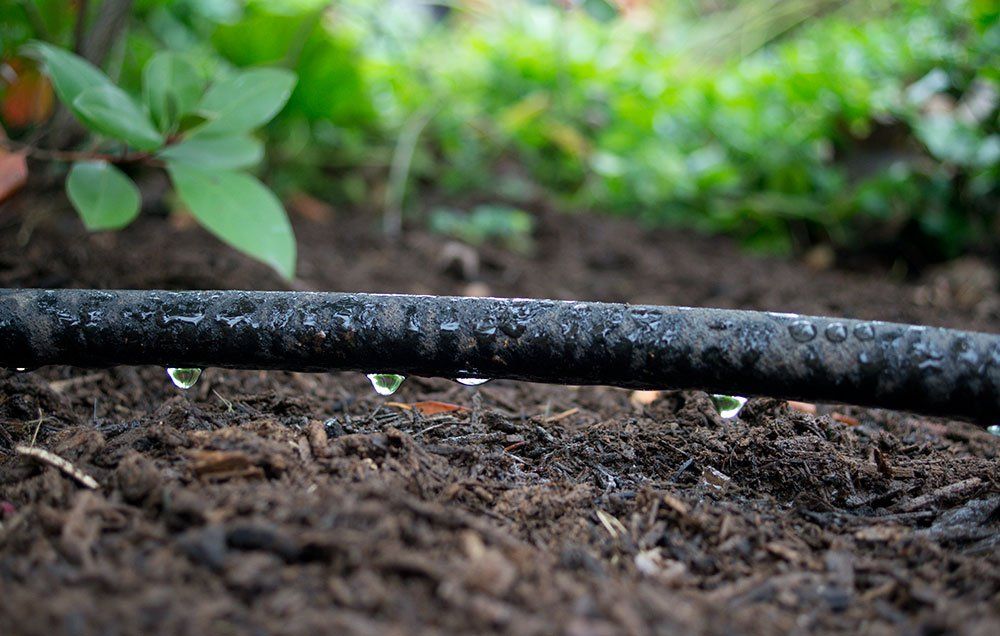To install a soaker hose irrigation system, first, lay out the hose along the desired area. Then connect the hose to a water source, such as a faucet or spigot, and turn the water on to allow the hose to gradually soak the soil.
This will ensure efficient watering for your plants. Now, let’s dive deeper into the details of how to install a soaker hose irrigation system. Whether you are a beginner gardener or an experienced one, using a soaker hose can be an effective way to conserve water and provide targeted irrigation to your plants.
Instead of spraying water in the air like sprinklers do, a soaker hose delivers water directly to the plants’ roots, minimizing waste and reducing the risk of evaporation. We will guide you step-by-step on how to install a soaker hose irrigation system in your garden, providing your plants with the moisture they need for healthy growth.
Benefits Of Using Soaker Hose Irrigation
Water Efficiency
One of the primary benefits of using a soaker hose irrigation system is its remarkable water efficiency. When compared to traditional methods like sprinklers or hand watering, soaker hoses ensure that water is delivered directly to the root zone of your plants, preventing unnecessary runoff and evaporation. By slowly dripping water into the soil, soaker hoses allow for deep penetration and minimize water waste.
Reduced Weed Growth
With a soaker hose irrigation system, you can say goodbye to the relentless battle against weeds. Unlike traditional watering methods that splash water indiscriminately, soaker hoses deliver moisture directly to the base of your plants. This targeted approach keeps the surrounding soil dry and hinders the growth of unwanted weeds, saving you time and effort in weed control. By giving your plants the advantage, soaker hoses help maintain a weed-free garden.
Prevents Soil Erosion
Soil erosion is a common concern when watering plants, especially on sloped areas. Fortunately, using a soaker hose irrigation system can significantly reduce the risk of soil erosion. By gently infiltrating the soil, soaker hoses maintain a consistent and steady flow of water, preventing excessive runoff. This allows the water to be better absorbed by the soil, promoting healthy root development and minimizing erosion. With soaker hoses, you can rest assured that your precious topsoil will stay in place, protecting your plants.
Step-By-Step Guide To Installing A Soaker Hose Irrigation System
If you’re tired of spending hours watering your garden by hand, a soaker hose irrigation system could be the solution you’ve been looking for. Not only does it save you time and effort, but it also ensures that your plants receive a consistent and deep watering, promoting healthier growth. In this step-by-step guide, we’ll walk you through the process of installing a soaker hose irrigation system in your garden.
Assessing your garden’s needs
Before diving into the installation process, it’s important to assess your garden’s unique watering needs. Take note of the size and shape of your garden, as well as the types of plants you have. Some plants may require more water than others, and knowing this will help you determine the length and placement of your soaker hose.
Choosing the right soaker hose
When it comes to selecting a soaker hose, quality matters. Look for a hose made from durable materials that will withstand frequent use and exposure to the elements. Additionally, consider the length of the hose and ensure it is long enough to cover your entire garden area. Quality and length are key factors to consider to ensure an effective and long-lasting irrigation system.
Measuring and marking the area for installation
To ensure proper coverage, it’s important to measure and mark the area where you plan to install the soaker hose. Use a measuring tape to determine the distance between plants or rows, and mark these spots with stakes or any other visible markers. This will help you lay out the hose evenly and efficiently, ensuring that every plant receives adequate water.
Preparing the area for the soaker hose
Before installing the soaker hose, make sure the area is clear of debris and weeds. Remove any rocks or branches that may obstruct the water flow. It’s also a good idea to lay down a layer of mulch to help conserve moisture and regulate the soil temperature. By preparing the area properly, you’ll create an ideal environment for your plants to thrive.
Installing the soaker hose properly
Now it’s time to install the soaker hose. Lay the hose alongside the plants or rows, following the marked spots you made earlier. Make sure the hose lies flat on the ground and is not twisted or kinked. Secure the hose with stakes or clips at regular intervals to keep it in place. It can also be helpful to elevate the hose slightly on top of the soil to prevent clogging.
Testing and adjusting the water flow
After the soaker hose is installed, it’s important to test the water flow and make any necessary adjustments. Connect the hose to your water source, turn it on, and observe how the water is distributed along the hose. If you notice any areas that are not receiving adequate water or areas that are being flooded, adjust the position of the hose or the water flow rate accordingly. It may take some trial and error to find the optimal settings, but once you do, your plants will thank you for it.
In conclusion, installing a soaker hose irrigation system is a simple yet effective way to keep your garden well-watered and healthy. By following this step-by-step guide, you’ll be able to set up your system quickly and efficiently, ensuring that each plant receives the water it needs. So go ahead and give your plants the hydration they deserve and enjoy the benefits of a thriving garden.
Tips For Proper Maintenance And Troubleshooting
Proper maintenance and troubleshooting are essential for ensuring the longevity and effectiveness of your soaker hose irrigation system. Regular inspections, cleaning, and addressing common problems in a timely manner can help you optimize the performance of your system and conserve water. In this section, we will discuss some valuable tips for the maintenance and troubleshooting of your soaker hose irrigation system.
Regular Inspections and Cleaning
Regular inspections and cleaning are crucial for identifying any issues and ensuring the proper functioning of your soaker hose irrigation system. Inspect your hoses at the beginning and end of each watering season, looking for any signs of wear and tear, cracks, or leaks. Make sure the connections between the hoses and the main water supply are secure and leak-free.
To clean your soaker hoses, remove any dirt or debris that might have accumulated on the surface. You can use a mild detergent solution and a soft brush to gently scrub away any residue. Rinse thoroughly with clean water and allow the hoses to dry completely before storing or reusing them.
Proper Storage During Winter Months
During the winter months, it’s important to store your soaker hose irrigation system properly to prevent damage from freezing temperatures. Drain the hoses completely by letting the water run through them until they are empty. Disconnect the hoses from the main water supply and remove any attachments.
Store your hoses in a dry and protected area, such as a garage or shed, to shield them from extreme temperatures and direct sunlight. Rolling up the hoses and securing them with rubber bands or Velcro straps can help you keep them organized and prevent tangles or kinks.
Identifying and Fixing Common Problems
Even with regular maintenance, you might encounter common problems with your soaker hose irrigation system. By identifying and fixing these issues promptly, you can ensure the optimal performance of your system.
Some common problems include leaks, clogs, and blockages. Inspect the hoses for any leaks or drips, and check the connections for tightness. Use a leak sealing tape or replace damaged parts to fix any leaks.
If you notice reduced water flow or uneven watering, it could indicate a clog or blockage in the hoses. Gently run water through the hoses to flush out any obstructions. If the clog is persistent, you may need to remove the affected section and clean it more thoroughly or replace it.
Leak Detection and Repair
Leaks can waste water and reduce the efficiency of your soaker hose irrigation system. To detect leaks, inspect the hoses for any visible signs of water seepage, such as wet spots or puddles along the hose length.
Once you identify a leak, act quickly to repair it. Depending on the location and severity of the leak, you can use a leak sealing tape or replacement parts to fix the issue. Remember to turn off the water supply and allow the hose to dry before applying any repairs.
Clogs and Blockages
Clogs and blockages can hinder the water flow in your soaker hose irrigation system, resulting in uneven watering or complete blockage. If you notice reduced water pressure or no water coming out from certain areas, it’s likely due to a clog or blockage.
To address this issue, start by inspecting the affected area and removing any visible debris or sediment that might be causing the blockage. If the blockage persists, carefully disconnect the affected section of the hose and flush it out using low-pressure water to dislodge any stubborn clogs. If necessary, replace the section with a new one.

Credit: www.goodhousekeeping.com
Frequently Asked Questions Of How To Install Soaker Hose Irrigation System
Can You Attach A Soaker Hose To Irrigation System?
Yes, you can attach a soaker hose to an irrigation system. It will help deliver water directly to your plants’ roots, promoting efficient watering and reducing water waste.
Do Soaker Hoses Need To Be Buried?
No, soaker hoses do not need to be buried. They can be placed on or just below the surface of the soil. However, burying them can help prevent tripping hazards and protect the hoses from damage.
How Deep Should A Soaker Hose Be Buried?
A soaker hose should be buried about 2-6 inches deep in soil for optimal performance and water distribution.
How Many Soaker Hoses Do I Need?
To determine how many soaker hoses you need, calculate the total length of your garden beds or plants that require watering. Divide that length by the length of each soaker hose you have or plan to use. This will give you the number of soaker hoses needed for effective watering.
Conclusion
To wrap things up, installing a soaker hose irrigation system can prove to be an efficient and cost-effective way to provide steady water supply to your plants. By following the step-by-step guide provided in this blog post, you can easily set up the system without any professional help.
Remember to consider factors like water pressure, soil moisture, and positioning of the hose for optimal results. So go ahead, give your plants the watering they deserve and watch them thrive with this simple yet effective irrigation solution.
